
Pohjoissuomenkarja (PSK)
- Home
- Our work
- Farm animals
- Nordic native breeds
- Pohjoissuomenkarja (PSK)
Top photo by Veera Happonen.
Origin: Finland
Other names: Northern Finncattle (NFC), Lapinlehmä
Weight: 530kg (cows)
Height: 128cm (cows)
Colour: White with black markings, mostly polled
Type: Dairy and beef breed
Number of offspring: 1-2
Birth weight: 20-35 kg
Number of breeding females 2019: totally of 887 breeding females of which 338 in milk recording herds.
Milk production, 2019: 5521 kg
Fat content: 4.29%
Protein content: 3.41%
Not at Risk – Vulnerable – Endangered – Critically Endangered – Extinct
History
The Northern Finncattle (NFC) is also called Lapland cow. In 2019, 338 of the cows in the Faba Coop’s dairy monitoring system were Northern Finncattle, and the breed is classified as endangered. The herdbook was established in 1905, and it was divided into two sections – one for white and one for red animals. The white form was called Perä-Pohjola’s breed or Lapland breed and red as Northern Finnish breed. At the first meeting on December 1, a common name for both colour variants was adopted: Northern Finnish breed. Red individuals were reported to be slightly larger in size, and horns were more common. However, white individuals were considered more original, valuable and they were believed to be adapted to the local conditions. The red herdbook was abandoned and handed over to another breeding association in 1914, and the Northern Finnish Breeding Association focused only on white cattle (Juvani 2014). Currently, according to herdbook, the breeding goal for Northern Finncattle aims to preserve the diversity of the breed.
Before World War II, there were large Northern Finncattle herds in Lapland, but the evacuation to Sweden in the autumn of 1944 took a toll on the population. By the time the remaining cattle could return home in the spring of 1945, the homes and barns had been burned. In many cases, only cows were brought back from Sweden. The bulls were either slaughtered or left in Sweden. The three native cattle breeds were cross-bred and bulls of Western Finncattle were imported to Lapland and used for breeding. In a few generations, the Lapland cow almost disappeared. Social pressure to discard the native breed was strong, and only the most persistent farmers kept Northern Finncattle cows in their herds. Thus, in the late 1970s the situation of the Northern Finncattle was alarming and a few preservation pioneers started to revitalize the breed. Among the pioneers were farmers from Tornio, Kerttu and Leino Lehto, along with veterinarian Ossi Kemppainen. As a result of the systematic and committed work paid off, and the rapid decline of the Northern Finncattle was stopped.
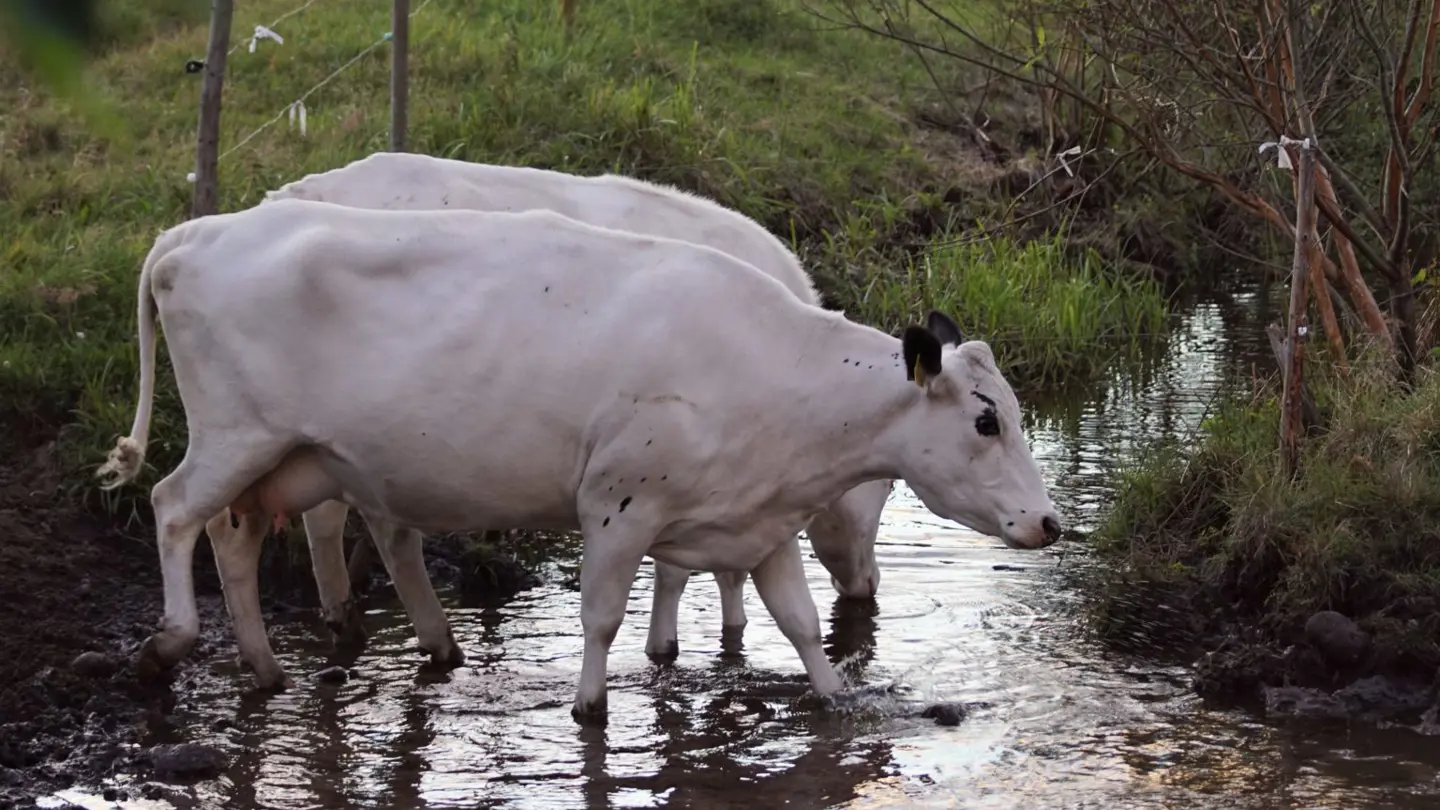
The gene bank for the Northern Finncattle was established in 1984 at the Pelso prison farm, where the remains of Northern Finncattle cows were collected. The living gene bank for Northern Finncattle currently houses eight dam lines (Haaja & Happonen 2019). As hardly any bulls from the Northern Finncattle were found in the 1980s, the Swedish Mountain Cattle had to be used to revive the population. A significant era in the history of Northern Finncattle will soon end when the last prison gene bank farm will be closed in 2022. A new home for the gene bank herd has been chosen to be the Lappia Vocational College, in Loue (Tervola).
The Natural Resources Center (LUKE) coordinates and implements Finland’s National Genetic Resources Programme for Agriculture, Forestry and Fishery in cooperation with stakeholders. LUKE is responsible for tailoring a plan for conservation activities. The main aim is to secure the genetic diversity, and the secondary is improving traits that are financial significance. The breeding organization (FABA) is responsible for managing practical measures, such as freezing semen dozes and elaborating breeding schemes for cows and bulls for renewal. Inbreeding is controlled by using the EVA program (Berg et al. 2006). Cryoconservation is essential part supporting in situ measures for all native breeds in Finland. The very first in vitro produced embryos of the Northern Finncattle were “born” in the embryo laboratory of Natural Resources Institute Finland in August 2020.
The Northern Finncattle population has grown slowly but steadily since the 1980s, currently with less than a thousand cows. In 2019, the milk recording system included 338 cows. The average yield was 5,521 kilograms of milk, a fat percentage of 4.29 and a protein percentage of 3.41. The effective population size of Northern Finncattle is estimated to be between 40-50 (Siipola 2019).
Characterization
Of the three Nordic sister breeds, Northern Finncattle has been studied the most diverse (Kierkegaard et al. 2019). Nearly 40 different studies have been published on it, with a particular emphasis on the mapping of genetic diversity with molecular genetics or genomics. In contrast, there are fewer international studies on phenotypic traits or the cultural and social significance of the breed.
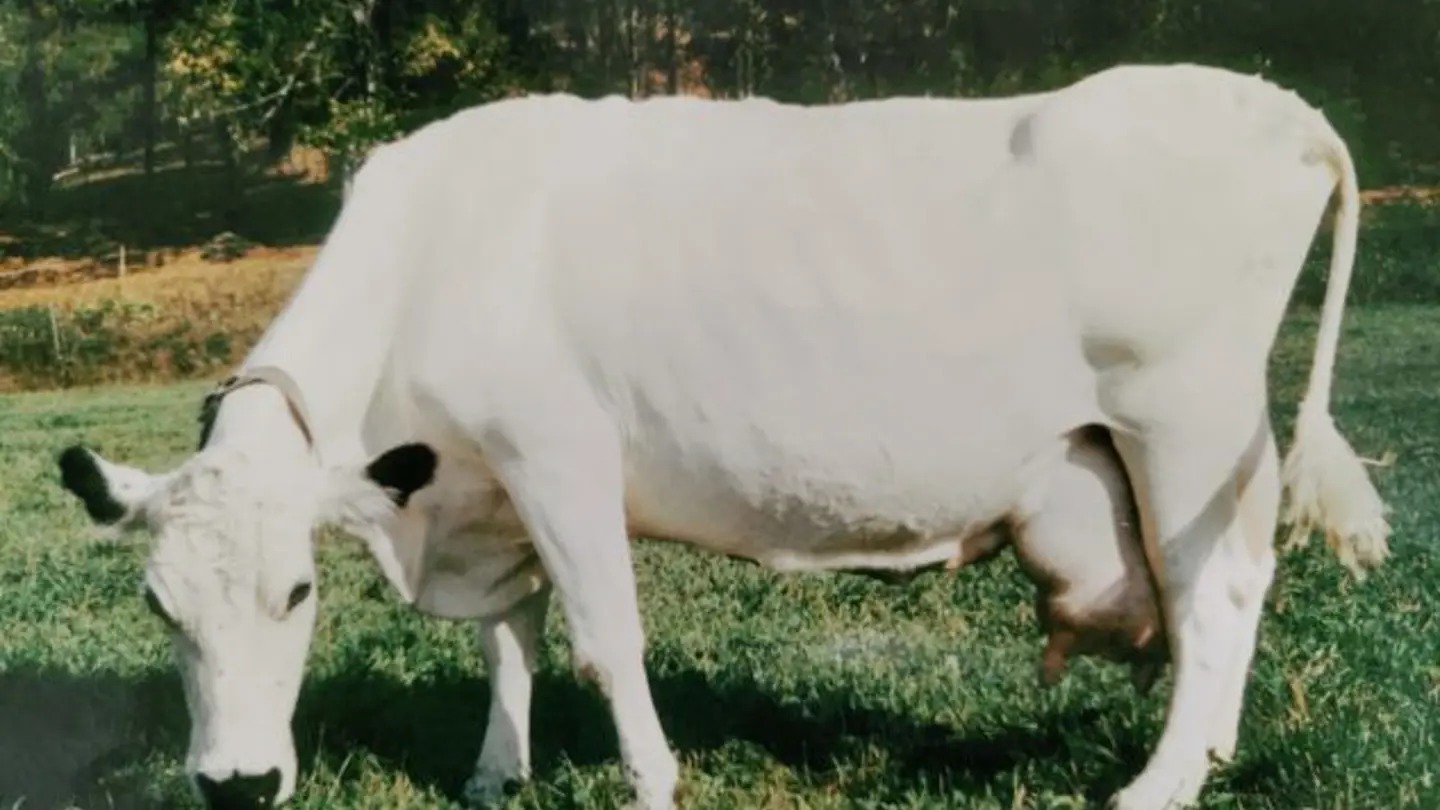
In past centuries, cattle were bred largely according to color and appearance – therefore, it is traditionally white in color or white with black or brown markings. Today, other colors appear from almost entirely black or black/brown-sided to completely white. Northern Finncattle individuals are naturally polled – which can be a resource for adapting to the arctic environment. The milk quality is desirable: kappa casein B is the most common type (71%) (Soppela et al., 2018). It is linked to better processing qualities of the milk. Their milk contains indications of a more favorable fatty acid composition in human consumption. In addition, the milk of Northern Finncattle contains less palmitic acid than mainstream milk (Soppela et al., 2018). According to the herders, the breed is healthy, bouncy, and social in nature. Calving is usually easy and successful without assistance (FABA). The breed is relative lightweight and moves agilely in the terrain – therefore, it fits better for ecosystem service purposes such as traditional pasturing than the larger commercial cattle. Also, a well-treated Lapland cow is very easy to approach, which make them suitable for another type of ecosystem service such as animal-assisted care.
Recent genome research has shown some evidence of adaption to the local climate (Pokharel et al., 2019). The results pointed towards specific lipid metabolism, having roles in inflammation and thermoregulation. Analogies can be found in hibernating bears or adaptation to arctic environments by the indigenous peoples. The 3MC Mountain cattle project provides novel evidence on history and shared ancestors, genetics and traditional heritage of three sister breeds – Pohjoissuomenkarja, Fjällko and Sidet trønder– og nordlandsfe in Finland, Sweden and Norway.
Fun facts/Did you know:
The first and so far the only one Northern Finncattle individual attained a production of 100,000 kilograms is Talvikki (100-299835 SSS), owned by Harri Toikka. Talvikki reached this milestone at the age of 15 years (2003). Talvikki’s average production was about 7,954 kg with a fat% of 4.05 and a protein% of 3.10. Talvikki reached the age of 21 years on the Tokkola farm. One of Talvikki’s descendant six generations ahead, Ylläs, is expected to achieve the lifetime production of 100K kilograms in the nearest future (Feb 2021).
According to traditional knowledge, the white color is thought to protect the animal from mosquito stings (LUKE).
References
Ahlman: Tutkimustietoa ja julkaisuja – paja.ahlman.fi
Ahlman: Pohjoissuomenkarja – paja.ahlman.fi
Aigerim Suleimenova. 2016. BIOCHEMICAL AND SENSORY PROFILE OF MEAT FROM DAIRY AND BEEF CATTLE.MSc Thesis. https://epublications.uef.fi/pub/urn_nbn_fi_uef-20161261/urn_nbn_fi_uef-20161261.pdf.
Bennewitz, J., Kantanen, J., Tapio, I., Li, M.H., Kalm, E., Vilkki, J., Ammosov, I., Ivanova, Z., Kiselyova, T., Popov, R., et al. 2006. Estimation of breed contributions to present and future genetic diversity of 44 North Eurasian cattle breeds using core set diversity measures. Genetics Selection Evolution 38, 201–220.
Berg P., Nielsen J. and Sørensen M.K. 2006. EVA: Realized and predicted optimal genetic contributions. CD communication 27-09, 2pp. WCGALP, 2006, s.246.
DAD-IS (http://www.fao.org/dad-is/data/en/)
FABA https://faba.fi/en/
Haaja, H; Happonen, V. 2019. Vankilalehmien suku: Pelson lapinlehmien emälinjat. Thesis. Savonia University of Applied Sciences.
Hakala K. 2012. GONADIHYPOPLASIA LAPINLEHMILLÄ RUOTSISSA JA SUOMESSA. Thesis.
Huuskonen, A. 2014. A comparison of Nordic Red, Holstein-Friesian and Finnish native cattle bulls for beef production and carcass traits. Agricultural and Food Science 23, 159–164.
Härkönen H. 2018. Monisikiötiineydet lypsyroduilla Suomessa. MSc thesis. https://www.theseus.fi/handle/10024/148523
Juvani J. 2014. Pohjoissuomenkarjan kantakirja-analyysi. Thesis. Oulu University of Applied Sciences.
Kantanen, J., and Vilkki J. 2005. Molecular characterisation of genetic resources in cattle and sheep for preserving breeding options.
Kantanen, J., Olsaker, I., Adalsteinsson, S., Sandberg, K., Eythorsdottir, E., Pirhonen, K., and Holm, L.-E. 1999. Temporal changes in genetic variation of North European cattle breeds. Animal Genetics 30, 16–27.
Kantanen, J., Olsaker, I., Brusgaard, K., Eythorsdottir, E., Holm, L.-E., Lien, S., Danell, B., and Adalsteinsson, S.2000a. Frequencies of genes for coat colour and horns in Nordic cattle breeds. Genetics Selection Evolution 32, 561–576.
Kantanen, J., Olsaker, I., Holm, L.-E., Lien, S., Vilkki, J., Brusgaard, K., Eythorsdottir, E., Danell, B., and Adalsteinsson, S. 2000b. Genetic Diversity and Population Structure of 20 North European Cattle Breeds. The Journal of Heredity 91, 446–457.
Kantanen, J., Edwards, C.J., Bradley, D.G., Viinalass, H., Thessler, S., Ivanova, Z., Kiselyova, T., Ćinkulov, M., Popov, R., Stojanović, S., et al. 2009. Maternal and paternal genealogy of Eurasian taurine cattle (Bos taurus). Heredity 103, 404–415.
Karja M. 2012. Suomenkarjan ja suomenlampaan suojelun ohjauskeinot. MSc thesis. http://urn.fi/URN:NBN:fi:hulib-201507211944
Kinnunen A. 2010. SUOMENKARJAN KÄYTTÖ TERAPIAELÄIMENÄ. Thesis. https://www.theseus.fi/bitstream/handle/10024/24759/Kinnunen_Anu.pdf?sequence=1
Kierkegaard, L., Groeneveld, L., Kettunen, A., and Peer Berg. 2020. The status and need for characterization of Nordic animal genetic resources. Acta Agriculturae Scandinavica, Section A — Animal Science. https://doi.org/10.1080/09064702.2020.1722216.
Kovanen M. 2012. “Ihmisen kokoinen”: eläinsuhde ja sosiokulttuurinen kestävyys pientilojen asukkaiden lehmämuistoissa. MSc Thesis. https://jyx.jyu.fi/handle/123456789/40626
Li, M.-H., and Kantanen, J. 2010. Genetic structure of Eurasian cattle (Bos taurus) based on microsatellites: clarification for their breed classification. Animal Genetics 41, 150–158.
Li, M.H., Sternbauer, K., Haahr, P.T., and Kantanen, J. 2005. Genetic components in contemporary Faroe Islands Cattle as revealed by microsatellite analysis. Journal of Animal Breeding and Genetics 122, 309–317.
Li, M.H., Adamowicz, T., Switonski, M., Ammosov, I., Ivanova, Z., Kiselyova, T., Popov, R., and Kantanen, J. 2006. Analysis of population differentiation in North Eurasian cattle (Bos taurus) using single nucleotide polymorphisms in three genes associated with production traits. Animal Genetics 37, 390–392.
Li, M.-H., Tapio, I., Vilkki, J., Ivanova, Z., Kiselyova, T., Marzanov, N., ćInkulov, M., Stojanović, S., Ammosov, I., Popov, R., et al. 2007. The genetic structure of cattle populations (Bos taurus) in northern Eurasia and the neighbouring Near Eastern regions: implications for breeding strategies and conservation. Molecular Ecology 16, 3839–3853.
Li, M.-H., Iso-Touru, T., Laurén, H., Kantanen, J., and others. 2010. A microsatellite-based analysis for the detection of selection on BTA1 and BTA20 in northern Eurasian cattle (Bos taurus) populations. Genet Sel Evol 42, 32.
Lilja T. 2014. Alkuperäiskarjan kasvattaminen: Mielihyvää elämään, mielenkiintoa työhön. MTT Kasvu 19. https://jukuri.luke.fi/bitstream/handle/10024/482112/mttkasvu19.pdf?sequence=1#page=33
Lien, S., Kantanen, J., Olsaker, I., Holm, L.-E., Eythorsdottir, E., Sandberg, K., Dalsgard, B., and Adalsteinsson, S. 1999. Comparison of milk protein allele frequencies in Nordic cattle breeds. Animal Genetics 30, 85–91.
LUKE https://www.luke.fi/tietoa-luonnonvaroista/geenivarat/elaingeenivarat/
Ministry of Agriculture and Forestry of Finland: National genetic resource program for agriculture, forestry and fisheries in Finland. 2020.
Ovaska U & Soini K. 2016. Local Breeds – Rural Heritage or New Market Opportunities? Colliding Views on the Conservation and Sustainable Use of Landraces. Sociology Ruralis.https://doi.org/10.1111/soru.12140..
Ovaska U. & Soini K. 2016. Native Breeds as Providers of Ecosystem Services: The Stakeholders’ Perspective. https://trace.journal.fi/article/view/52739.
Pokharel, K, M. Weldenegodguad, R. Popov, M. Honkatukia, H. Huuki, H. Lindeberg, J.Peippo, T. Reilas, S. Zarovnyaev and J. Kantanen. 2019. Whole blood transcriptome analysis reveals footprints of cattle adaptation to sub-arctic conditions K. Animal genetics 2019. doi: 10.1111/age.12783.
Rimpiläinen J. & Mehtälä I. 2010. POHJOIS- JA ITÄSUOMENKARJAN GEENIPANKKITOIMINNAN TOIMINTAOHJEET. https://www.theseus.fi/bitstream/handle/10024/14547/Ilkka%20Mehtala%20ja%20Johanna%20Rimpilainen.pdf?sequence=1
Rönn S. 2013. Framtidsutsikter för finsk lantrasboskap. http://urn.fi/URN:NBN:fi:amk-201304255111
Saine A. 2013. Alkuperäisrotujen maidon ja lihan tuotteistamisen kehittäminen. MSc thesis. https://www.theseus.fi/bitstream/handle/10024/54060/Annina_Saine.pdf?sequence=1
Siipola A- 2019. Ayrshiren ja suomenkarjan perinnöllisen vaihtelun tila sukupuutiedoista arvioituna. MSc thesis. http://urn.fi/URN:NBN:fi:hulib-201906122712.
Soppela, P; Tuomivaara, A; Honkatukia, M. 2018. Pohjoissuomenkarjan maidon omaleimaisuuden hyödyntäminen. https://lauda.ulapland.fi/handle/10024/63647
Soini K, Pouta E., Latvala T and Lilja T. 2019. Agrobiodiversity Products in Alternative Food System: Case of Finnish Native Cattle Breeds. Sustainability.
Soini & Y de Haas. 2010. Trends in cattle diversity and cattle production in Europe: from popular to niche. https://www.wageningenacademic.com/doi/pdf/10.3920/978-90-8686-697-7#page=23
Soini K. & Lilja T. 2014. Alkuperäiset kotieläinrotumme Green Care -toiminnassa. MTT Kasvu 19. http://jukuri.luke.fi/handle/10024/482112
Tapio, I., Värv, S., Bennewitz, J., Maleviciute, J., Fimland, E., Grislis, Z., Meuwissen, T.H.E., Miceikiene, I., Olsaker, I., Viinalass, H., et al. 2006. Prioritization for Conservation of Northern European Cattle Breeds Based on Analysis of Microsatellite Data. Conservation Biology 20, 1768–1779.
Tupasela T, Joutsjoki V. & Kantanen J. 2014. Suomen Lehmä-Brändi: Itä-, länsi- ja pohjoissuomenkarjan maitojen hyödyntäminen erikoistuotteissa. Report. http://jukuri.luke.fi/bitstream/handle/10024/482709/SLB%20Loppuraportti%2028%203%202014.pdf?sequence=1
Tuomivaara A. 2016. “Pieniruokanen se on tuottoonsa nähen”: Lapinlehmän ruokinta ennen ja nyt. http://urn.fi/URN:NBN:fi:amk-2016121220059.
Read more about our other native breeds
-
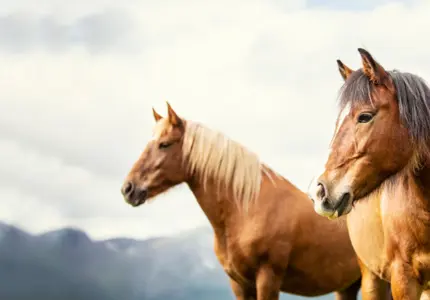
Nordland/Lyngen Horse
The first known and documented exhibition where this breed participated, was in 1898 at Lyngseidet in Troms. In the 1930s, organized breeding of Nordland/Lyngen horses started.
Read more about the breed
-
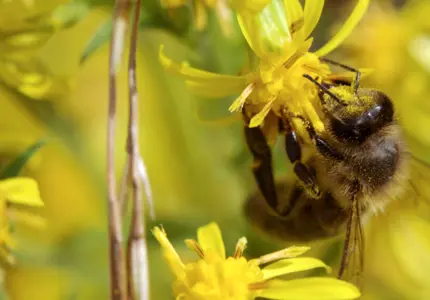
The Nordic brown bee
Honey bees are threatened by intensive agriculture, habitat loss and climate changes worldwide and are important to conserve, not only due to their honey production but also due to their pollination services.
Read more about the breed
-
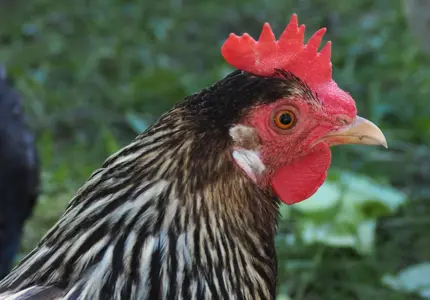
Finnish Landrace Chicken
In 1974, the agricultural advisory agency collaborated with Seiskari and published a call to find remains of the Finnish landrace chicken. As a result, one flock was found in South-East Finland. This family line was named after its geographical location as “Savitaipaleenkanta”.
Read more about the breed